Fintona Branch
History
The Fintona branch was another of those oddities, of which there were many in Ireland, which straddled the border between being a railway and a tramway. The Fintona branch was actually a very short railway branch line - 1100 yards — which connected the town of Fintona with the main railway line, which had effectively bypassed it to the Northwest, at Fintona Junction. The reason for its inclusion here is that given its short length, the railway company chose to work it by horse, at least as far as passenger traffic was concerned, initially with a vehicle more akin to a stagecoach, but from 1883 through to 1957, with a vehicle that was 100% tramway in design, a product of the Metropolitan Railway Carriage and Wagon Company Ltd.
Uniforms
Photos taken prior to the Great War are rare, and those depicting staff taken during this period appear not to have survived at all. Although photographic evidence is therefore unavailable, the fact that the branch was operated by railway companies throughout its entire existence (Londonderry and Enniskillen,1854-60; Dundalk and Enniskillen, 1860-62; Irish North Western Railway, 1862-76; and the Great Northern Railway of Ireland, 1876 onwards), it seems inconceivable that staff would not have worn uniforms, and they certainly wore them from 1914 through to closure.
During the GNRI years, the branch was operated in line with railway practice, with a driver, stationmaster, signalman and various other staff (porters, messenger boys, carters, checkers); conductors were not used. The driver, whose official grade was 'Leading Porter', was invariably very smartly tuned out in waistcoat, shirt and tie, and single-breasted jacket with lapels; the latter bore insignia, probably 'G N R' block letters, which in the early years were probably embroidered directly on the collar, but which in later decades were carried on a lozenge-shaped cloth badge within a light-coloured border.
By the time of the Great War, caps were certainly military in style with a soft top, as favoured by railway companies; they almost certainly bore embroidered system initials — 'G N R' — in block letters, though photographic evidence is currently lacking. Towards the end of the line's life, staff were issued with military-style caps with a broad, tensioned crown (top); these bore a once-piece, brass, 'GNRI' cap badge (see below).
As the Fintona branch was in reality just a horse-worked railway, the only senior staff would have been the station master at Fintona, and the occasional visiting inspector. The earliest surviving photo (from 1914; see below) indicates that station masters wore double-breasted jackets with two rows of four buttons and lapels; the upper part of the latter (the collars) bore insignia of some kind, almost certainly embroidered, probably the system initials, 'G N R'. Headgear took the form of a military-style cap with a peak embellished with light-coloured braid; the cap bore a badge of some kind, possibly the grade, though this cannot be made out on surviving photographs.
As far as I am aware, female staff were never employed on the Fintona branch.
Further reading
For a history of the Fintona branch, see: 'The Fintona Horse Tram' by Norman Johnston; West Tyrone Historical Society (1992). For an overview of the Irish tram scene, including Fintona, see 'Irish Trams' by James Kilroy; Colourpoint Books (1996).
Images
Horse tram drivers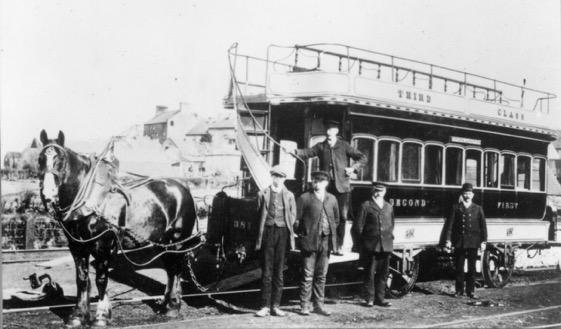
A wonderfully evocative photo taken in Fintona station yard in 1914 with what would appear to be a freshly outshopped No 381 (the high number was due to it being treated by the GNRI as a railway coach). Photo believed to have been taken by Inspector Andrew Johnston; courtesy of Jim Kilroy, tram archivist at the National Transport Museum (see link).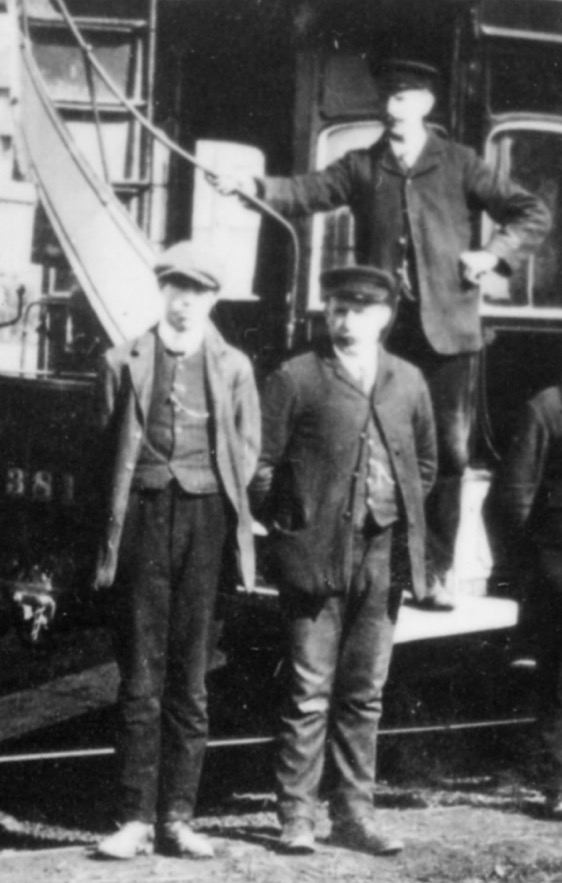
A blow-up of the above photo showing three individuals, two of whom are certainly railway staff. The man on the platform is probably the driver (officially designated 'Leading Porter'), whilst the man standing on the right is probably a porter, checker or carter. The driver is wearing a single-breasted jacket and soft-topped, railway-style cap; unfortunately, the insignia on the jackets or caps cannot be made out.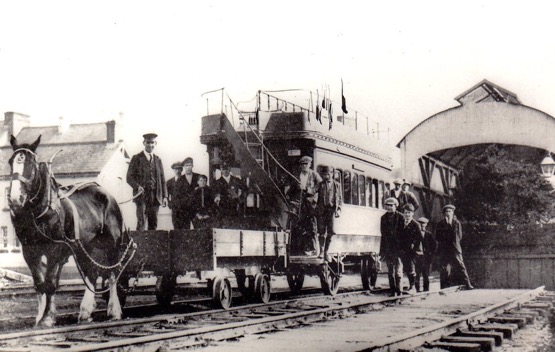
The line's horse, allegedly always called 'Dick', and so named irrespective of whether the incumbent was male or female, stands in Fintona station with a baggage truck and the tramcar in 1926. Photo courtesy of the Tramways and Light Railway Society, with thanks to David Voice.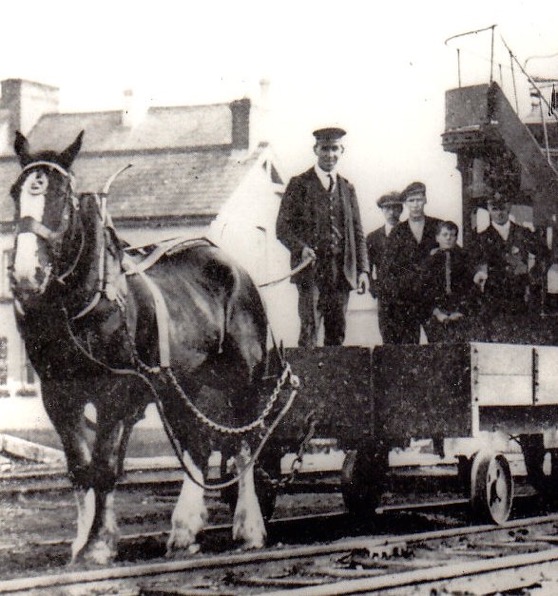
A blow-up of the above photo showing the driver — Willie McClean — who drove the tram for 35 years from 1922 to 1957.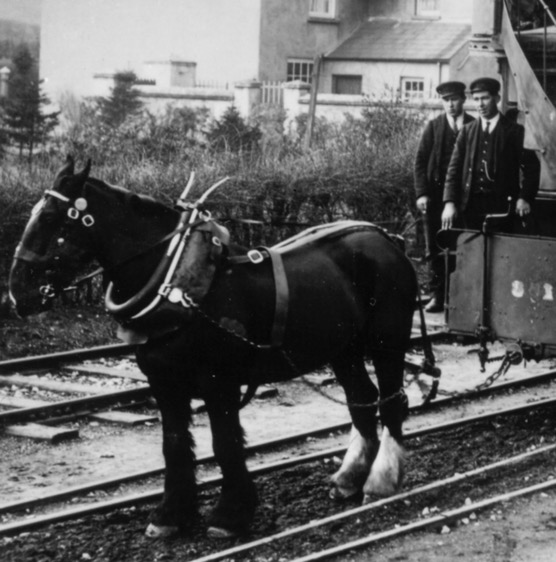
A shot which was probably taken just after the end of the Second World War, with the tram looking decidedly tatty in the teak livery which was introduced around 1926; the horse is the penultimate 'Dick', who appears to have worked during the 1940s. The driver — in waistcoat, jacket and cap — is accompanied by another member of the railway staff, probably a porter. Photo courtesy of Jim Kilroy, tram archivist at the National Transport Museum (see link).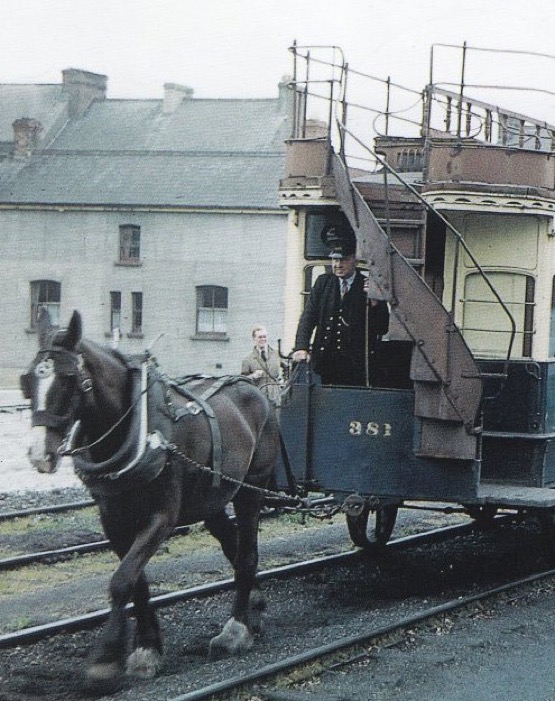
Driver Willie McClean at the helm of a rather tired-looking No 381, seen here at Fintona in its last livery — photo undated, but probably taken in the last year of operation (1957). Photo courtesy of Jim Kilroy, tram archivist at the National Transport Museum (see link).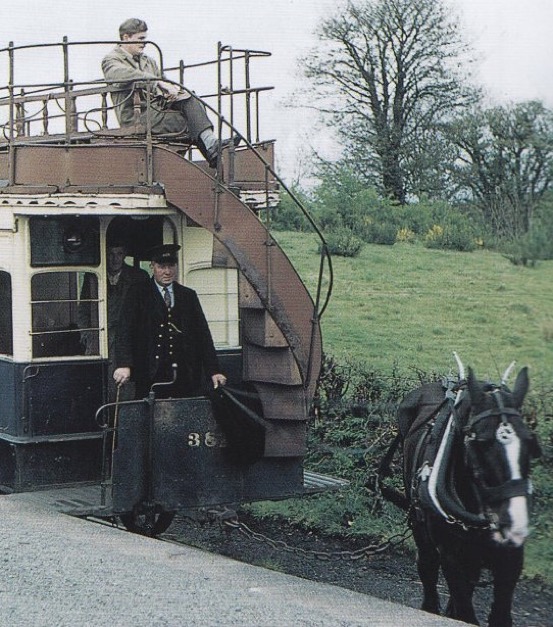
Another shot, possibly taken on the same day as the preceding photo, but this time at Fintona Junction. The brass GNRI cap badge can just be made out. Willie McClean is still smartly turned out in waistcoat, jacket, shirt, tie and cap, in spite of the lines impending closure. Photo courtesy of Jim Kilroy, tram archivist at the National Transport Museum (see link).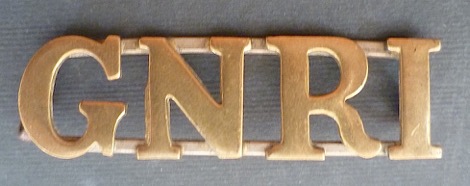
Great Northern Railway of Ireland brass cap badge, as worn by staff working the Fintona branch, probably from the 1950s through to closure. Author's Collection.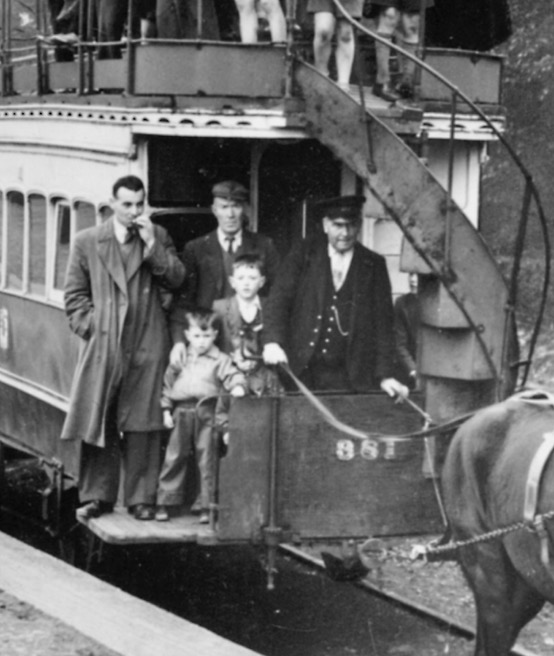
Willie McClean at the helm on the last day of operation, 30th September 1957. Photo courtesy of the Tramways and Light Railway Society, with thanks to David Voice.
Senior staff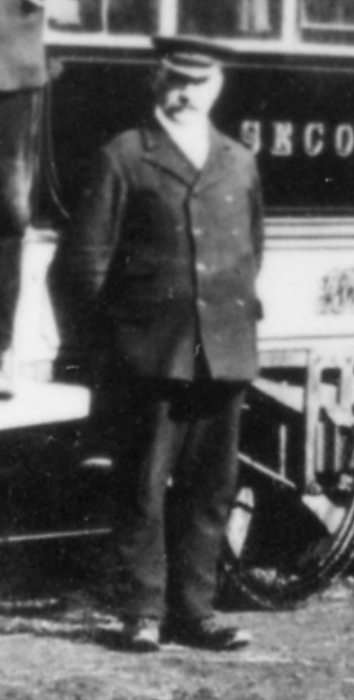
A blow-up of the 1914 photo above, showing an individual who is very probably the Fintona Station Master. He is wearing a double-breasted jacket and a military-style cap embellished with braiding.